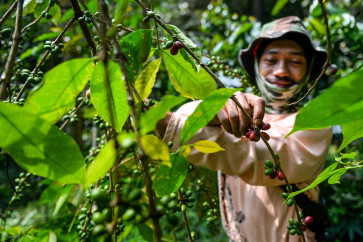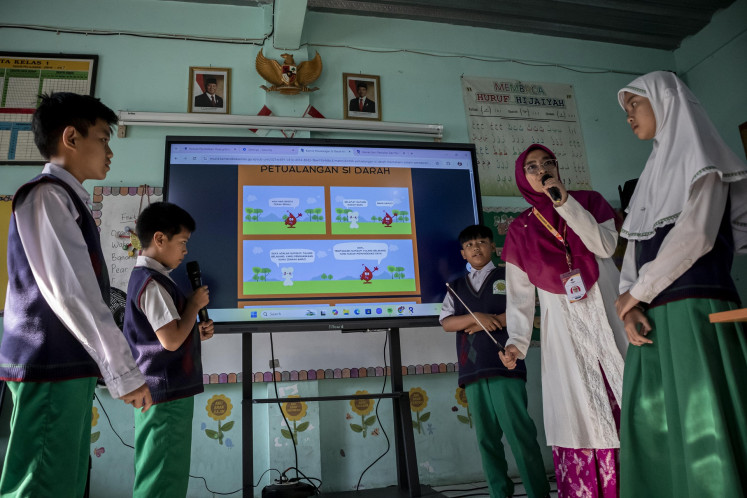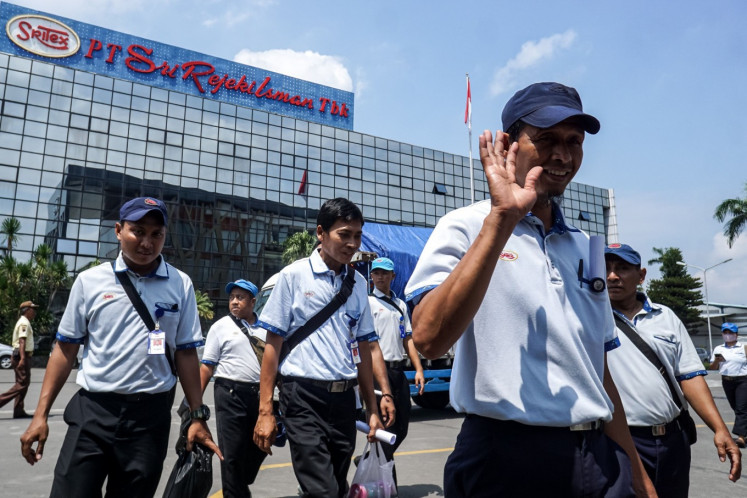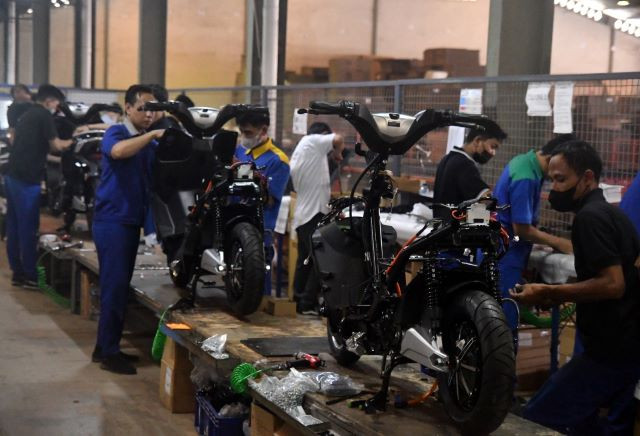Lessons learned from the 1997 Asian financial crisis
In terms of Human Development Index (HDI) China ranks 85th in the world, Indonesia and the Philippines at 107th place and Vietnam at 117th, though these countries have done well in terms of improvement throughout the period of 2010 and 2019.
Change text size
Gift Premium Articles
to Anyone
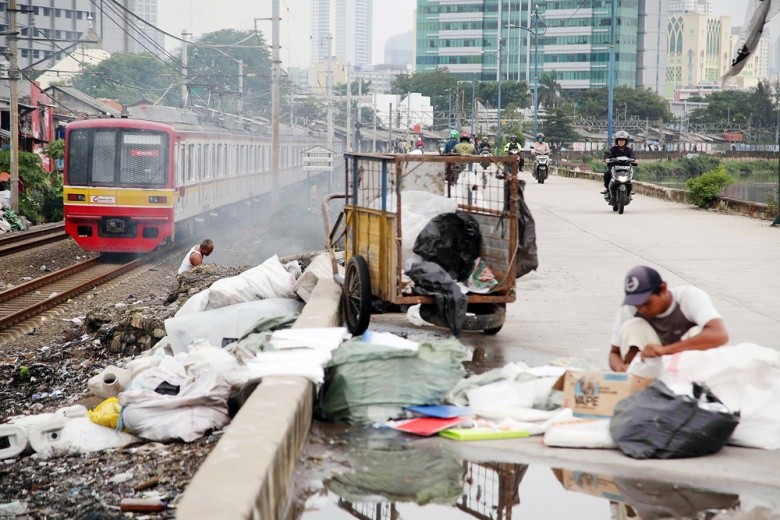
E
ast Asia, including ASEAN and China, recovered strongly from the devastating financial crisis of 1997. There is no need for me to discuss what happened back then. Suffice it to say the crisis created an opportunity for deeper East Asian cooperation on the one hand and that some of the big cooperate ideas that were floated then, particularly on Asian regional financial architecture, remain unfinished to this day.
We also adjusted better to the Great Financial Crisis (GFC) of 2008 compared with western Europe and North America. East Asia demonstrated this agility again during the COVID-19 pandemic.
Between 1997 and 2021 annual per capita output grew by 5.7 percent in Indonesia, 4.1 percent in the Philippines and 4.4 percent in Thailand. For the record, these are the three countries of ASEAN that were hit hardest by the crisis. Growth performance in the rest of ASEAN in the same period has been remarkably high, leaving aside Brunei Darussalam.
In fact, Vietnam has emerged as the star performer within ASEAN and is seemingly on a miraculous development path, continuing the “Flying Geese” pattern of East Asia. China, of course, has been the most phenomenal of all economies of East Asia during the last 25 years, growing at a double-digit rate almost uninterruptedly.
The good growth performance of East Asia is attributable to stimulus-inspired growth in the developed economies of Europe and North America but also, to a more important degree, the deepening trade connectivity that governments painstakingly strengthened after the crisis.
Exports of goods and services from ASEAN and China gained in the last 25 years relative to exports from the world combined. ASEAN’s share in the world export of goods and services rose to 6.4 percent in 2019 though it declined slightly to 6 percent in 2021. The latter reflects the disruption to the global supply chain and many other problems during the COVID-19 pandemic.
In the same period China’s share almost quintupled from 2.7 percent in 1997 to 12.7 percent in 2021. China has been the clear winner in the trade globalization of the last 25 years, establishing in the earlier part of the period competitiveness in low-skill manufacturing but extending it later to high-skill manufacturing, including information and communication technology (ICT) products.
China is perhaps the first country in the world with a truly global dispersion of manufactured products. Wherever one goes these days one sees China’s products offered in big and small retail outlets as well as in business-to-business (B2B) transactions.
The financial profile of East Asia has been no less impressive. The combined foreign exchange reserves of ASEAN rose from US$148.7 billion in 1997 to $501 billion in 2008 and $1.2 trillion in 2021. Singapore in the first place, but Thailand and Indonesia own the largest fractions of these reserves. Vietnam with a reserve of $109 billion is catching up amazingly.
In matters related to foreign exchange reserves, China, Japan and Korea have for a long time been known as high-reserve economies. Their combined reserves rose from $394 billion in 1997 to $3.2 trillion in 2008 and $5.3 trillion in 2021.
However, foreign exchange reserves do not tell everything about the international financial position of an economy. The latter is better judged from the international investment position or from the difference between liability investments or foreign investment in an economy and asset investments or foreign investments overseas of the reporting economies.
On this score the last 25 years have also been a period of strong gains for East Asia. ASEAN’s net international investment position turned from a negative, -$74 billion, in 1997 to a positive, $287 billion, in 2008 and $1 trillion in 2021, although the bulk of this is attributable to Singapore. China’s net investment position neared $2 trillion in 2021, slightly down from $2.3 trillion in 2019, while Japan continues to build up its net position to $3.6 trillion in 2021. Korea’s net position turned to a positive of $660 billion in 2021 from a negative position in 1997 when it was also hit by the Asian financial crisis.
We are familiar with the jargon that after the GFC 2008 we all turned “Keynesian”, aiming to maintain growth momentum with the help of debt-financed government expenditure to fuel consumer spending and an easy monetary policy to keep asset prices attractive to investors and interest rates at a level below output growth rates.
Admittedly, fiscal profiles of East Asian economies do look different from one another. Japan and Singapore have debt-to-gross domestic product ratios of 263 percent and 133 percent, respectively, but neither of these two financial giants is considered a problem. Government debt is within a moderate range in China at 73 percent, Korea at almost 50 percent, the Philippines at 60 percent, Thailand at 58 percent and a low level in the case of Vietnam at 40 percent and Indonesia at around 30 percent.
In delivering the fruits of growth to people in a balanced manner the track records of ASEAN and China are more mixed. China has liberated from poverty more than 500 million people under its New Economic Policy (NEP). ASEAN countries have also done remarkably well, if at a lesser magnitude. East Asia for a long time and Southeast Asia in more recent times have dedicated a comparatively high percentage of resources to social capital formation in the forms of health and education.
However, the burdensome issues of inequality afflict ASEAN and China in a similar way to what they do in the entire world. In terms of the Human Development Index (HDI) China ranks 85th in the world, Indonesia and the Philippines at 107th place and Vietnam at 117th, though these countries have done well in terms of improvement throughout the period of 2010 and 2019.
The most populous countries of ASEAN and China score discouragingly poor in terms of the Gini coefficient, which ranges from 0. 382 in Indonesia to 0.385 in China, 0.423 in the Philippines and 0.357 in Vietnam. As far as income distribution is concerned East Asia and South and Southeast Asia have lagged quite far behind western Europe. Earnings of the rich as a multiple of the bottom 50 percent of the population are substantially higher in East Asia than in western Europe.
The numbers above tell us a great deal about our ability to get the growth process going and how to repair crisis-driven damage. However, in spite of the remarkable progress, herculean tasks lie before us. Our per capita income still lags far behind western Europe and North America, except for Japan and Singapore.
Even in the case of East Asia, average income in 2021 is only 117 percent of the world average compared with 215 percent in the case of Europe and 315 percent in the case of North America. The lag is even deeper in the case of average wealth. While an average European has 2.3 times the average global wealth, the average North American has 3.9 times and the average East Asian has only 1.4 times.
Earlier on I pointed to the poorer accomplishments of East Asia in solving relative inequality, an issue to which the world is yet to find an answer. What is more, our ability to narrow the gap with western Europe and North America in the mastery of science and technological capacity and to better share the ability across borders and between different social strata domestically is of central importance to our future journey.
Under the lingering COVID-19 pandemic and its eventual end and the rising frequency of disasters, resilience to disasters and crisis preparedness have gained prominence on the international agenda, particularly the regional agenda. Such resilience and preparedness can prevent lives from being lost and assets from being destroyed in times of disaster.
We in ASEAN and East Asia should consider establishing an East Asia Disaster Management Fund (DMF) with multiple windows representing the vulnerability of the region to different kinds of disaster. Its elements may include, first of all, a regional-disaster risk profile where probability of occurrence of disasters and expected losses in case of occurrence are plotted. The matrix should be updated in real time through a cooperation network and uploaded to a website that government officials, business professionals, civil societies and citizens at large can easily access on a real-time basis.
Second, an illustrative list of regional measures should be agreed upon for each probable disaster with a view to quickly activating them in times of need. Protecting regional supply chains is one such measure by agreeing on an immediate standstill on restrictive border measures on goods and services that are essential to basic health services, basic foods and basic construction materials.
Third, governments should generate sufficient financial resources for the fund. Formulas for burden sharing and conditions for activation can be agreed upon.
***
The writer is vice chair, Board of Trustees, CSIS Foundation. This is the first of a two-part article.



